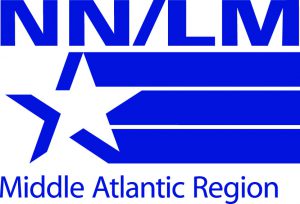1776: Although the Declaration of Independence has just been signed and the United States’ independent status has not yet been recognized by many countries, the right to vote begins in America as a legal privilege almost exclusively available to white, property-owning, Protestant men.
1788: With the ratification of the Constitution, all slaves are counted as 3/5’s of a single person on the national census.
1790: The Naturalization Act bars all persons of Asian descent from becoming naturalized. Only “free white” immigrants are recognized as eligible for naturalization.
1792: New Hampshire becomes the first state to eliminate its property requirements, thereby extending the right to vote to almost all white men.
1807: Women lose the right to vote in every state in the US for the next 113 years.
1828: Maryland becomes the last state to remove religious restrictions when it passes legislation enfranchising Jews. White men can no longer be denied the right to vote on the basis of their religion.
1848: The Treaty of Guadalupe-Hidalgo renders the lands now known as Arizona, California, New Mexico, Texas, and Nevada US territory. All Mexican persons within these territories are declared US citizens, but simultaneously denied the right to vote by English proficiency, literacy, and property requirements along with violence, intimidation, and racist nativism.
1856: North Carolina becomes the last state to eliminate its pr operty requirements. The right to vote is extended to all white men in America.
1857: In the landmark case Dred Scott v. Sandford, the US Supreme Court rules that “a black man has no rights a white man is bound to respect.” African Americans are further deprived of the right to citizenship and, by extension, the right to vote.
1866: The first Civil Rights Act grants citizenship, but not the right to vote, to all persons born in the USA.
1869-70: The Fifteenth Amendment is passed in Congress and ratified by the states. The right to vote is now legally guaranteed to all male citizens regardless of “race, color, or previous condition of servitude.”
1882: Congress passes the Chinese Exclusion Act, which establishes restrictions and quotas on Chinese immigration while legally excluding Chinese persons from citizenship and voting.
1889-1890: Poll taxes and literacy tests specifically designed to reduce African American voting power are introduced in Southern states for the first time.
1890: The Indian Naturalization Act allows Native Americans to acquire citizenship.
1896: Louisiana is the first state to implement a grandfather clause in its election policy. No male citizen whose grandparent was deprived of the right to vote may exercise that right himself.
1915: The US Supreme Court finds Oklahoma’s grandfather clause unconstitutional in Guinn v. United States.
1919-20: The Nineteenth Amendment is adopted by Congress and ratified by the states into law. The right to vote is now guaranteed to all citizens regardless of gender.
1922: The US Supreme Court rules that persons of Japanese origin are insufficiently white to qualify for citizenship in Takao Ozawa v. United States.
1923: The US Supreme Court declares persons of Indian descent, even “high caste Hindus”, as ineligible for citizenship because they cannot be legally recognized as “white” persons.
1924: The Indian Citizenship Act of 1924 declares all non-citizen Native Americans born in the USA to be citizens with the right to vote.
1937: Georgia’s poll taxes are found constitutional by the US Supreme Court in Breedlove v. Suttles.
1943: The Chinese Exclusion Act is repealed, and Chinese persons are now eligible for naturalization.
1946: Filipinos receive the right to naturalization after almost 50 years of colonialism.
1946: Federal courts find white primary systems in Georgia unconstitutional in King v. Chapman.
1948: The last state laws denying Native Americans the right to vote are overturned.
1952: The McCarran-Walter Act recognizes the right to citizenship of first-generation Japanese Americans.
1957: The Civil Rights Act of 1957 authorizes the US Attorney General to file lawsuits on behalf of African Americans denied the right to vote.
1960: The Civil Rights Act of 1960 is passed, making collection of state voter records mandatory and authorizing the Justice Department to investigate and access the voter data and history of all states in order to carry out civil rights litigation.
1964: The passage and ratification of the 24th Amendment outlaws poll taxes nationwide.
1964: The concept of one person, one vote is upheld by the US Supreme Court as the national standard applying to all legislative bodies in Reynolds v. Sims.
1964: The Civil Rights Act of 1964 is passed, making discrimination on the basis of race, national origin, gender, or religion in voting, public areas, the workplace, and schools illegal.
1965: The Voting Rights Act is signed into law, prohibiting any election practice that denies the right to vote to citizens on the basis of race and forces jurisdictions with histories of voter discrimination to submit any changes to its election laws to the government for federal approval prior to taking effect.
1966: The Supreme Court affirms the Voting Rights Act’s constitutionality in South Carolina v. Katzenbach.
1970: Temporary provisions of the Voting Rights Act are renewed for the next five years.
1971: The 26th Amendment sets the national voting age to 18 and over.
1974: The Supreme Court rules that states may deny convicted felons the right to vote in Richardson v. Ramirez.
1975: The Voting Rights Act’s special provisions are once again extended. New amendments permanently banning literacy tests and mandating assistance to language minority voters are also added.
1975: The US Supreme Court finds Texas redistricting in Bexar County unconstitutional due to its enervating effects on minority voting power in White v. Regester.
1976: The Supreme Court rules in Beer v. United States that preclearance of election changes deemed unfair to minority voters are in compliance with the Voting Rights Act so long as “retrogressive” changes do not occur.
1986: Voting rights for people of color are strengthened by the US Supreme Court’s decision to declare multi-member state legislative districts in North Carolina unconstitutional in the Thomburg v. Gingles case.
1990: The passage of the Americans with Disabilities Act ensures that election workers and polling sites provide a variety of services designed to ensure the possibility of persons with disabilities to vote.
1992: The language minority provisions of the Voting Rights Act are extended for the next 15 years.
1993: The National Voter Registration Act requires states to permit mail-in registration, and make registration services available at DMVs, unemployment offices, and other state agencies.
1995: The Supreme Court rules that race may not be the “predominant factor” in redistricting in Miller v. Johnson.
2002: The Help America Vote Act creates minimal standards of election administration, provides for provisional ballot voting, and sets aside funds to help states improve outdated voter systems.
2004: The Supreme Court found claims of partisan gerrymandering nonjusticiable in Vieth v. Jubelirer.
2006: The Voting Rights Act is extended for another 25 years.
2009: The Military and Overseas Empowerment Act establishes more efficient means for troops stationed overseas and expatriates to request and receive absentee ballots through the mail or electronically.
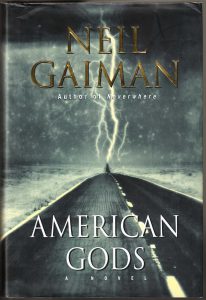 American Gods, by Neil Gaiman, is one of those books that my husband has always insisted I read, but that I’ve put off reading until now. Why am I reading it now? Because the TV show, starring Gillian Anderson and Ian McShane (among others), is set to debut in 2017, and I wanted to know the story before I watch the show.
American Gods, by Neil Gaiman, is one of those books that my husband has always insisted I read, but that I’ve put off reading until now. Why am I reading it now? Because the TV show, starring Gillian Anderson and Ian McShane (among others), is set to debut in 2017, and I wanted to know the story before I watch the show.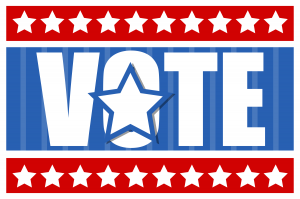 Voting is central to the equality of all Americans, so in honor of our constitutional right to vote, following is a brief history of voting rights in the United States.
Voting is central to the equality of all Americans, so in honor of our constitutional right to vote, following is a brief history of voting rights in the United States.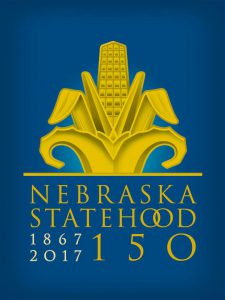
 In an effort to help Nebraska consumers navigate through open enrollment, the Department of Insurance has developed the
In an effort to help Nebraska consumers navigate through open enrollment, the Department of Insurance has developed the  Date: November 8, 2016
Date: November 8, 2016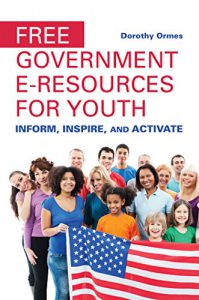 We have a new book in our collection here at the Nebraska Library Commission:
We have a new book in our collection here at the Nebraska Library Commission: 
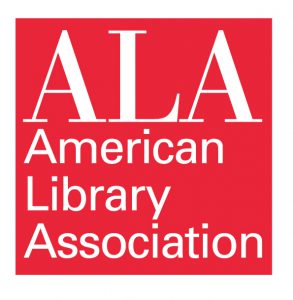 Every year, nearly $200 million in federal library funding is awarded to states by the Institute of Museum and Library Services (IMLS). IMLS can do that work, and gets the funding it needs, in no small measure because Congress passed and periodically “reauthorizes” the Museum and Library Services Act. It’s time for Congress to renew that important landmark legislation again and library champions in the Senate have just introduced a bill, S. 3391, to do exactly that.
Every year, nearly $200 million in federal library funding is awarded to states by the Institute of Museum and Library Services (IMLS). IMLS can do that work, and gets the funding it needs, in no small measure because Congress passed and periodically “reauthorizes” the Museum and Library Services Act. It’s time for Congress to renew that important landmark legislation again and library champions in the Senate have just introduced a bill, S. 3391, to do exactly that.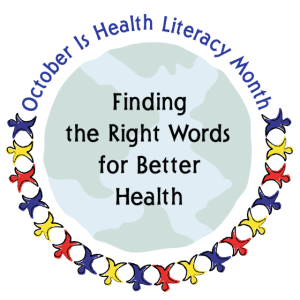 Discover ways your library can encourage health literacy in your community
Discover ways your library can encourage health literacy in your community
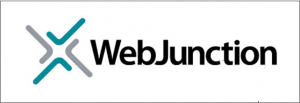

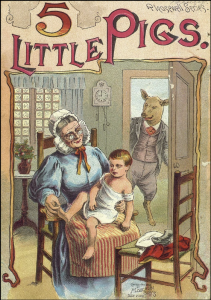 We can learn much about how a historical period viewed the abilities of its children by studying its children’s literature. Occupying a space somewhere between the purely didactic and the nonsensical, most children’s books published in the past few hundred years have attempted to find a line between the two poles, seeking a balance between entertainment and instruction. However, that line seems to move closer to one pole or another depending on the prevailing cultural sentiments of the time. And the very fact that children’s books were hardly published at all before the early 18th century tells us a lot about when and how modern ideas of childhood as a separate category of existence began.
We can learn much about how a historical period viewed the abilities of its children by studying its children’s literature. Occupying a space somewhere between the purely didactic and the nonsensical, most children’s books published in the past few hundred years have attempted to find a line between the two poles, seeking a balance between entertainment and instruction. However, that line seems to move closer to one pole or another depending on the prevailing cultural sentiments of the time. And the very fact that children’s books were hardly published at all before the early 18th century tells us a lot about when and how modern ideas of childhood as a separate category of existence began.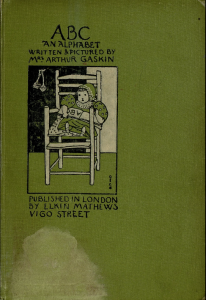 “children’s literature was a flourishing, separate and secure part of the publishing industry in Britain.” The trend accelerated rapidly and has never ceased—
“children’s literature was a flourishing, separate and secure part of the publishing industry in Britain.” The trend accelerated rapidly and has never ceased—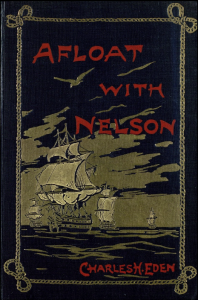 Or we might do so, at least, by examining the children’s literature of the Victorian era, perhaps the most innovative and diverse period for children’s literature thus far by the standards of the time. And we can do so most thoroughly by surveying the thousands of mid- to late 19th century titles at the
Or we might do so, at least, by examining the children’s literature of the Victorian era, perhaps the most innovative and diverse period for children’s literature thus far by the standards of the time. And we can do so most thoroughly by surveying the thousands of mid- to late 19th century titles at the 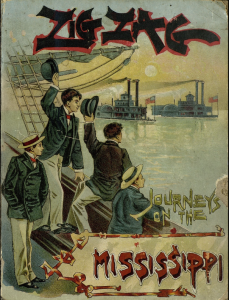 and spelling books, fairy tales, codes of conduct, and, especially, adventure stories—pre-Hardy Boys and Nancy Drew examples of what we would call young adult fiction, these published principally for boys. Adventure stories offered a (very colonialist) view of the wide world; in series like the Boston-published
and spelling books, fairy tales, codes of conduct, and, especially, adventure stories—pre-Hardy Boys and Nancy Drew examples of what we would call young adult fiction, these published principally for boys. Adventure stories offered a (very colonialist) view of the wide world; in series like the Boston-published 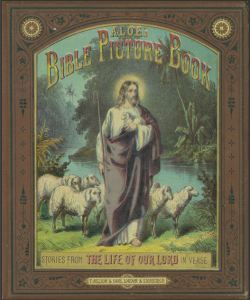 For most Victorian students and readers, poetry was a daily part of life, and it was a central instructional and storytelling form in children’s lit. The
For most Victorian students and readers, poetry was a daily part of life, and it was a central instructional and storytelling form in children’s lit. The 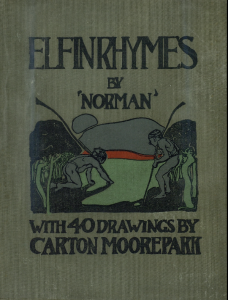 of children’s aesthetic sensibilities. We find precisely the opposite to be the case in the wonderful
of children’s aesthetic sensibilities. We find precisely the opposite to be the case in the wonderful 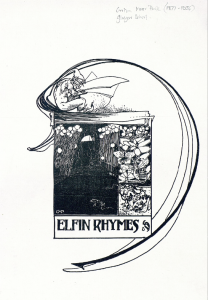 This title is representative of an emerging genre of late Victorian children’s literature, which still tended on the whole, as it does now, to fall into the trite and formulaic. Elfin Rhymes sits astride the fantasy boom at the turn of the century, heralded by hugely popular books like
This title is representative of an emerging genre of late Victorian children’s literature, which still tended on the whole, as it does now, to fall into the trite and formulaic. Elfin Rhymes sits astride the fantasy boom at the turn of the century, heralded by hugely popular books like  narrowly fixed by Latin grammar books and Pilgrim’s Progress, by the end of the 19th century, the influence of science fiction like
narrowly fixed by Latin grammar books and Pilgrim’s Progress, by the end of the 19th century, the influence of science fiction like
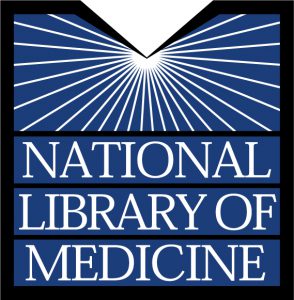
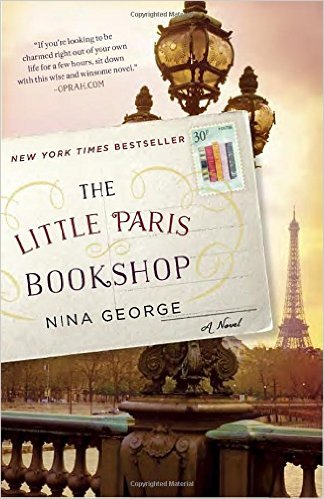 “Monsieur Perdu calls himself a literary apothecary. From his floating bookstore in a barge on the Seine, he prescribes novels for the hardships of life. Using his intuitive feel for the exact book a reader needs, Perdu mends broken hearts and souls. The only person he can’t seem to heal through literature is himself; he’s still haunted by heartbreak after his great love disappeared. She left him with only a letter, which he has never opened.
“Monsieur Perdu calls himself a literary apothecary. From his floating bookstore in a barge on the Seine, he prescribes novels for the hardships of life. Using his intuitive feel for the exact book a reader needs, Perdu mends broken hearts and souls. The only person he can’t seem to heal through literature is himself; he’s still haunted by heartbreak after his great love disappeared. She left him with only a letter, which he has never opened.
